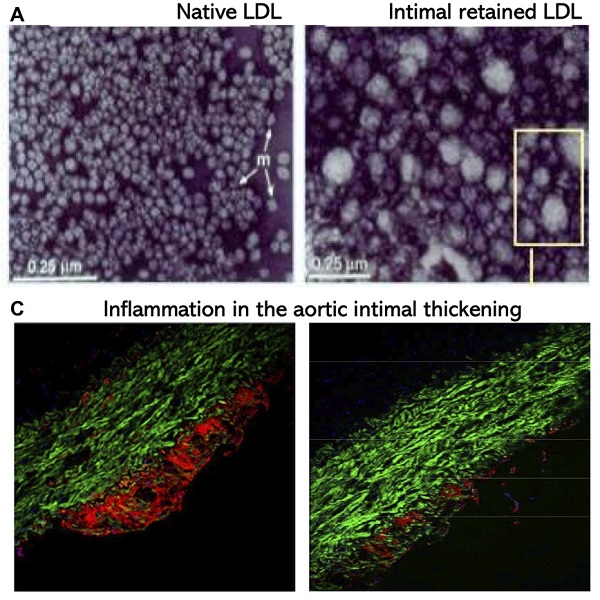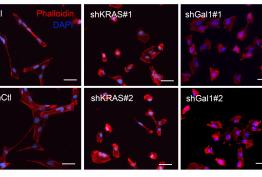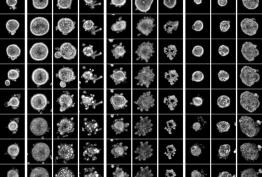The IIBB-CSIC and the Hospital de Sant Pau are leading this project, which has just been selected in the latest call for aid from the BBVA Foundation for Scientific Research Teams in Biomedicine. The peptide-based radiotracer is designed to specifically target retained and accumulated LDL-cholesterol in the vascular wall of the arteries, a process that occurs in the very early stages of the disease. It will allow a risk assessment and an early diagnosis much higher than the current one.
Researchers from the Barcelona Institute of Biomedical Research of the CSIC (IIBB-CSIC) and IIB-SantPau are developing a molecular imaging tool to detect mechanisms that occur locally in the vascular wall and that are associated with future acute cardiovascular events. Specifically, the radiotracer will mark and allow visualization in an image of the cholesterol retained and accumulated in the vascular wall of the arteries. The tool is an innovative approach, as there is currently no similar one in the cardiovascular area.
The project is developed in close collaboration with cardiologists specializing in cardiac imaging and Nuclear Medicine at the Hospital de Sant Pau and the Hospital Vall d'Hebron, and with experts in CIEMAT peptide radiolabelling. It is also one of the five projects that have just been selected by the BBVA Foundation in its latest call for biomedical research grants.
Cardiovascular diseases are the leading cause of death worldwide. Many of the current diagnostic strategies are based on evaluating risk factors, but this is not enough to establish a differential and early diagnosis. An alternative option is molecular imaging techniques, which allow us to "see" what is happening inside the body. Given that a risk factor is cholesterol accumulated in the vascular wall, an early diagnosis would be precisely to be able to detect this cholesterol accumulation and related mechanisms as soon as possible.
This is what the PlaqueCHOL project (acronym for Translational Molecular Imaging for Detection of Cholesterol Entrapment in the Vasculature with 68Ga-labeled LRP1-derived Peptides), which is coordinated by Dr. Vicenta Llorente Cortés, a researcher at the IIBB-CSIC and the IIB-SantPau. To do this, scientists will design a new peptide-based radiotracer, which will allow cholesterol retained in the vasculature to be detected using positron emission tomography coupled to computed tomography (PET / CT). The radiotracer will recognize low-density lipoproteins - LDL - that are retained within what is known as the arterial intima, a space occupied by the extracellular matrix between the endothelium and the middle layer of the vascular wall.
“This LDL retained in the extracellular matrix of the arterial intima is different from the circulating native LDL, since in the intima the LDL undergoes a series of modifications that make it recognizable by the radiotracer. There is currently important scientific and clinical evidence supporting the idea that modified intimate LDL is much more closely associated with cardiovascular risk than circulating LDL. " From IIBB-CSIC we provide this molecule that will have to be labeled, says Vicenta Llorente, but the final design of the radiotracer involves such important steps as the conjugation of the peptide with a bifunctional chelating agent and the binding of the chelating agent to the radioisotope. "All these steps can only be done in collaboration with a radioactive labeling center such as CIEMAT and with clinicians who are experts in the use of radioisotopes in clinical practice," he adds.
The new radiotracer will be applied the same as other radiolabels (usually intravenously), will have a half-life of about 40 minutes and will be eliminated via the kidneys, according to the previous pharmacokinetic parameters with which the scientists are working. The development will allow knowing in advance and more precisely which patients have the highest cardiovascular risk, facilitating their inclusion in prevention strategies and optimal control of their cardiovascular risk.
In addition, the translational nature of the project, in which Research centers specialized in radiolabeling of peptides such as the Center for Energy, Environmental and Technological Research (CIEMAT) and hospital units specialized in Cardiac Imaging and Nuclear Medicine of the Hospital de SantPau and Vall de Hebrón Hospital will facilitate the transfer of the results of the in vivo preclinical model to clinical practice.







